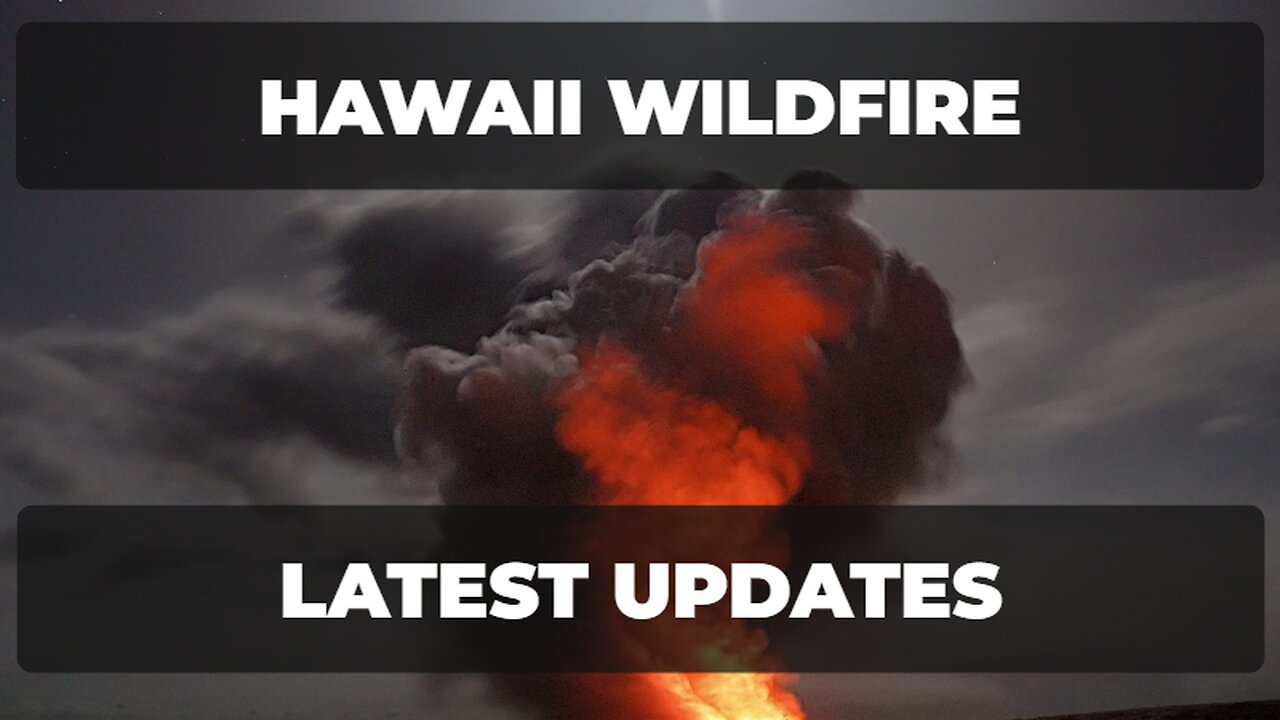Premium Only Content

Breaking News: Hawaii Devastated by Wildfires, State of Emergency Declared
Hawaii is generally known for its lush landscapes, stunning beaches, and tropical climate, it has also been prone to wildfires, particularly during dry and windy conditions. Here's an overview of Hawaii wildfires and their impact:
Wildfire Occurrence:
Wildfires in Hawaii can occur throughout the year, but they tend to be more prevalent during the drier months, typically from May to October. These wildfires are often fueled by dry vegetation, strong winds, and human activities such as unattended campfires, discarded cigarette butts, or even intentional arson.
Impact on Ecosystems:
Hawaii's unique ecosystems, including its native forests and grasslands, are particularly vulnerable to the devastating effects of wildfires. Many of the plant and animal species found in Hawaii are endemic, meaning they are found nowhere else in the world. When wildfires spread through these areas, they can destroy habitats, disrupt natural processes, and threaten the survival of these unique species.
Human and Property Impact:
In addition to ecological consequences, Hawaii wildfires can also have significant impacts on human communities and property. As wildfires spread, they can threaten homes, infrastructure, and even critical utilities. Evacuations may be necessary to ensure the safety of residents and emergency responders.
Prevention and Mitigation:
Efforts to prevent and mitigate wildfires in Hawaii include public education campaigns to raise awareness about fire safety, responsible behavior in fire-prone areas, and the proper disposal of flammable materials. Land management practices, such as controlled burns to reduce excess vegetation, can also help reduce the risk of larger, uncontrolled fires.
Emergency Response and Management:
When wildfires do occur, emergency responders, including firefighters and other agencies, work to contain and extinguish the flames. This can involve a combination of ground crews, aircraft, and specialized equipment. Collaboration between local, state, and federal agencies is crucial to effectively manage and respond to wildfires.
Climate Change and Wildfires:
It's important to note that changing climate patterns, including increased temperatures and altered precipitation patterns, can contribute to the frequency and intensity of wildfires in Hawaii and other regions. Climate change can exacerbate the conditions that lead to fire-friendly environments, making proactive measures even more critical.
Since my information is current only up until September 2021, I recommend checking with local news sources or official agencies for the most recent updates on Hawaii wildfires, including any new developments, prevention strategies, or ongoing efforts to manage and address the issue.
-
 13:39
13:39
Exploring With Nug
17 hours ago $5.99 earnedCars Found Underwater While Searching Georgia Woman!
74.2K2 -
 56:50
56:50
IsaacButterfield
1 day ago $8.32 earnedSam Kerr Goes To Jail | Americas Worst Law | Teacher Of The Year
85.6K18 -
 6:14
6:14
Silver Dragons
1 day agoAmerican Silver Eagle Coins - Dealer Reveals Everything You NEED to Know
79.7K9 -
 19:18
19:18
Neil McCoy-Ward
1 day ago🚨 The USAID Scandal Goes Way Deeper Than We Could Have Imagined!
74.2K39 -
 14:29
14:29
Bearing
20 hours agoTHE BIG BALLS EFFECT - Democrats MELT DOWN Over DOGE & USAID 🔥
67.8K85 -
 11:35
11:35
China Uncensored
1 day agoChina Nuclear Fusion Breakthrough Shocks The World
81.1K54 -
 50:19
50:19
AlaskanBallistics
1 day ago $2.76 earnedI Love This Gun Podcast Episode 6
57.1K2 -
 16:35
16:35
DEADBUGsays
1 day agoPolice Stories Ep4
38.2K -
 6:15
6:15
RTT: Guns & Gear
1 day ago $1.48 earnedSaying Goodbye To A Legend - Demolition Ranch Leaving YouTube
30.7K5 -
 1:33:27
1:33:27
Michael Franzese
1 day agoGovernment STEALING More than the Mob - Elon Musk's Report
72.9K68